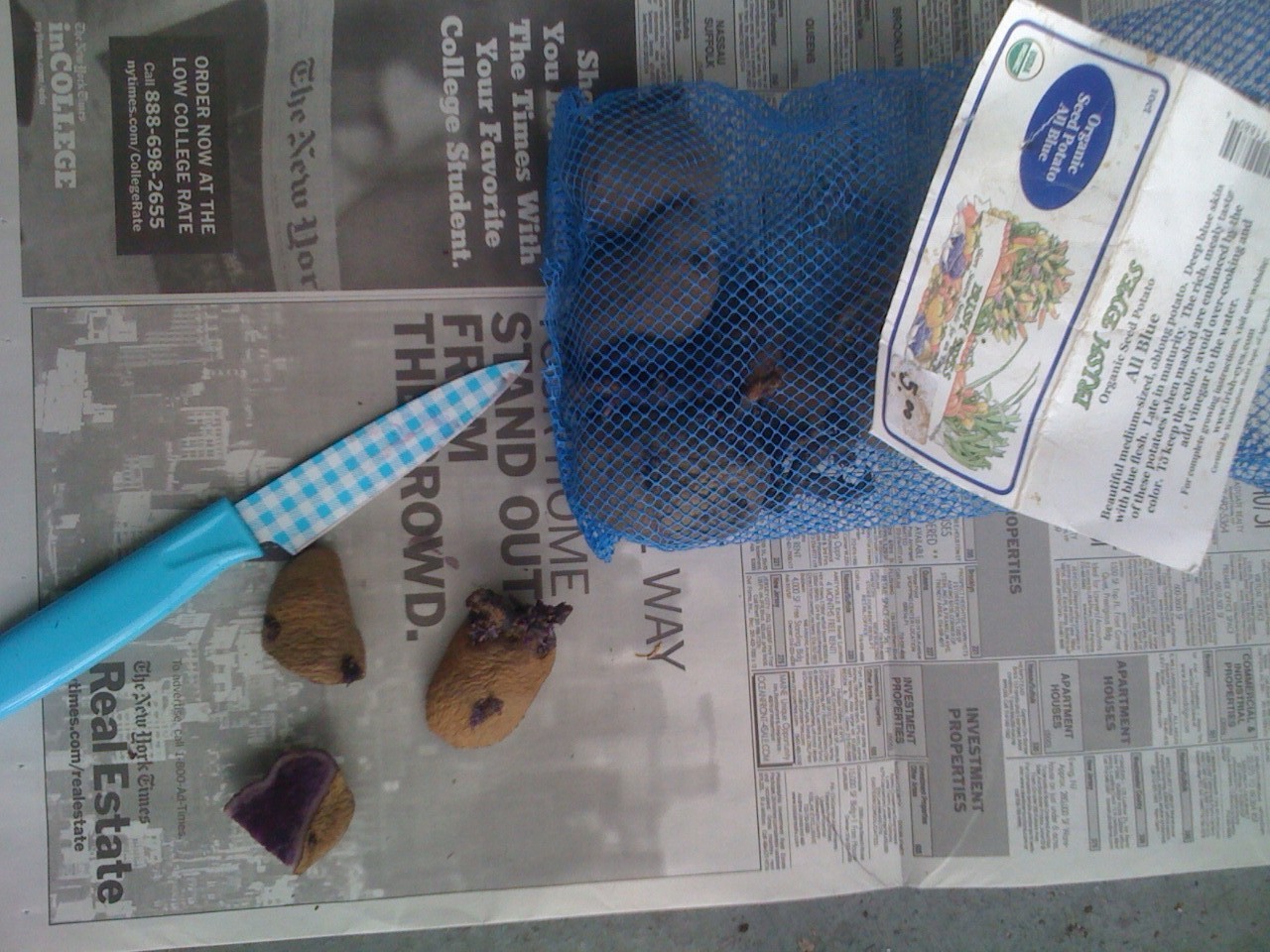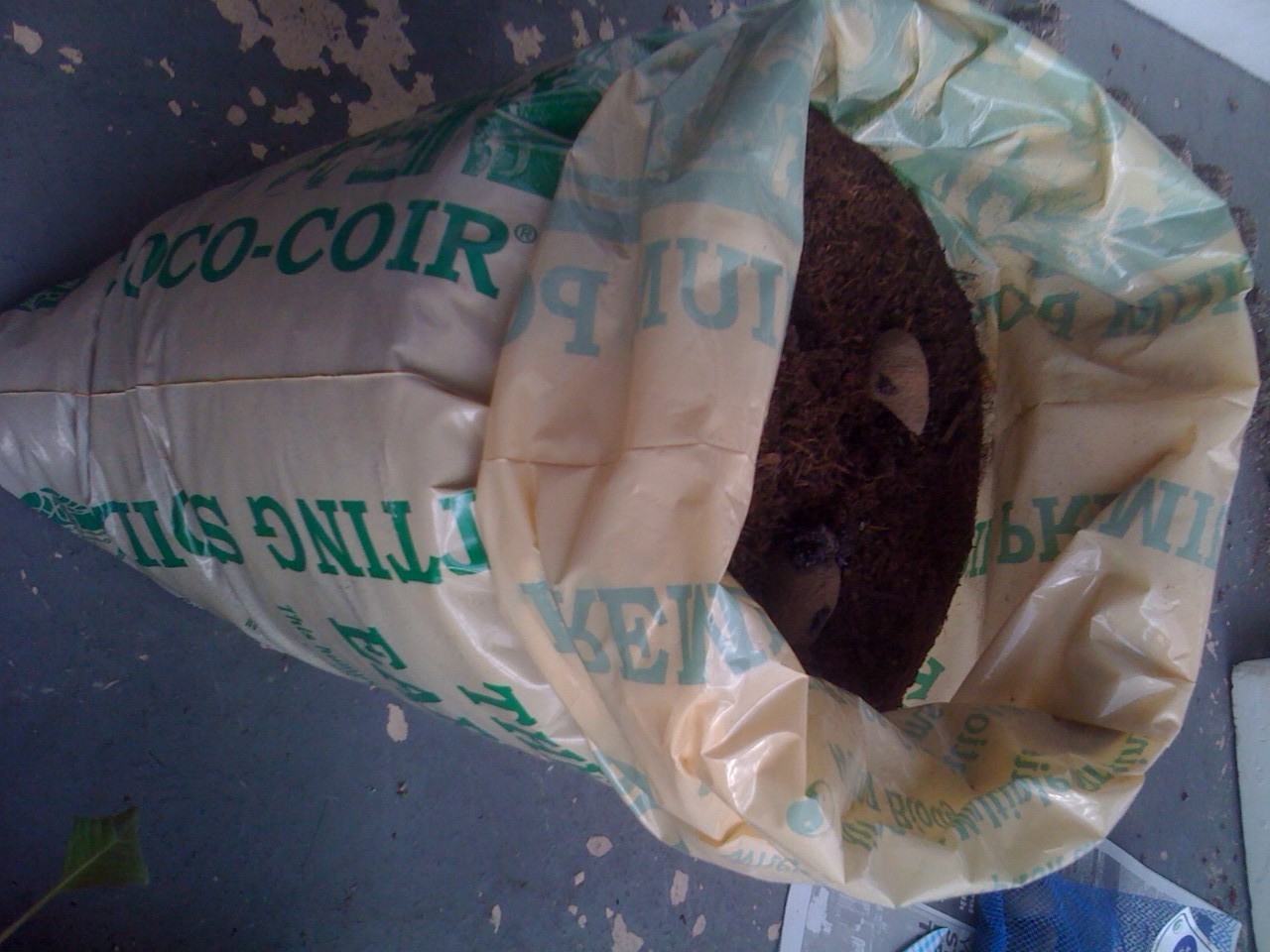HOW TO :: Grow Potatoes in a Bag
 Growing potatoes is a pretty mysterious undertaking. All of the harvestable bits of the plant grow underground, making it hard to keep track of progress. Even though I've grown potatoes in the past, I'm consistently amazed when baby potatoes appear in the soil at harvest time.
Growing potatoes is a pretty mysterious undertaking. All of the harvestable bits of the plant grow underground, making it hard to keep track of progress. Even though I've grown potatoes in the past, I'm consistently amazed when baby potatoes appear in the soil at harvest time.
To grow a potato, you basically cut a small piece off of a seed potato (a potato specifically designated as seed for planting, versus a potato you buy in the store) and bury it under a few inches of soil. The plant will eventually send up a stem and leaves, and as the plant grows we cover them (always leaving a little bit of leaf showing) in order for the plant to produce more potatoes. Pretty simple. This process, when done in a field, is called "hilling up" potatoes, as farmers will form hills of soil around the potato stem to maximize production.
In small urban gardens, this task becomes difficult as we often don't have much space to begin with. Or maybe, like me, you only have a small balcony. Fortunately for all of us, potatoes can be grown in bags — or boxes or garbage cans for that matter. Essentially, any container in which potatoes can grow vertically while we cover their stems and roots will work.
Before we get started, a few quick notes about potatoes:

• Potatoes do not like super hot weather -- for Northern gardeners, now is a great time to get started. For Southern gardeners, you'll have to wait until the heat of summer begins to wane, or try putting your potato bags in a cool, shaded spot that only gets morning sun, such as the north side of a garage or a north-facing balcony.
• Sweet potatoes and potatoes are different plants, but can be grown in the same manner. (Remember that they take longer, about 3 months.)
• Choose a quick-growing potato variety for your bag. Here are some great seed resources: Fedco Seed & Irish Eyes.
• Finally, for this plant-in-a-bag project I prefer a better-looking bag. Burlap sacks and plastic woven feed bags are a bit more shabby-chic than the bag your soil is sold in. Try your local coffee roaster or country feed store; these often have the added benefit of vintage-looking logos — a great way to add character to your urban garden.
For more potato info and how they're grown, check out this post.
